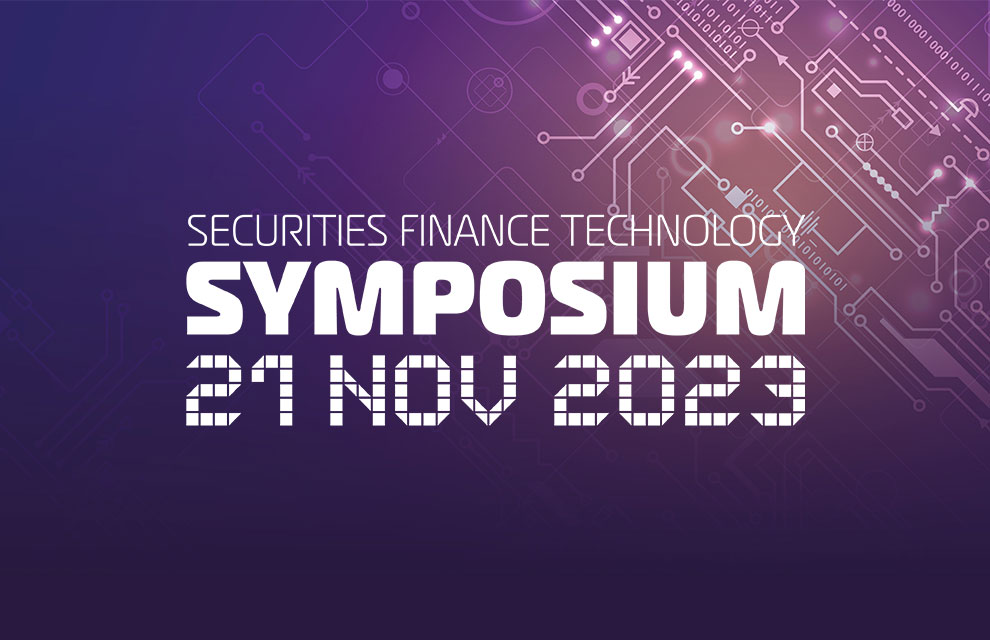“Securities lending, total return swaps (TRS) and repo is still in the Dark Ages,” said panellist Shane Martin, head of sales for securities financing at Wematch.live, when commenting on manual processes in trading at this years’ Securities Finance Technology Symposium.
Martin made the comments in a panel that covered liquidity and strategies in post-trade obligations associated with securities lending, financing and TRS activities, moderated by Roy Zimmerhansl, practice lead at Pierpoint Financial Consulting.
When highlighting the industry changes needed to move securities lending processes away from datasheets and manual practices toward more automation, Zimmerhansl put forward the notion that “people are more afraid of getting it wrong than celebrating getting it right”.
He asked the panellists for their views on what they saw as “the key to instigating the paradigm shift that is needed to move away from spreadsheets and telephone trading”.
Travis Keltner, head of financing and analytics, managing director, funding and collateral solutions at State Street, said: “You have to get the balance right — you need to assume some level of risk in order to innovate while managing your shareholder and client demands.
“In today’s environment we are all generally resource constrained, but there are many ways to optimise time and resources to progress initiatives. It is a mindset, more than anything, to be open to innovating while buffering for calibrated failure.”
Martin said: “We have to move this business forward. We have to get away from that mindset of: “I am scared of changing something because I am going to get in trouble”. You cannot have that mindset in this day and age.”
He added: “If you do not have effectiveness and efficiency within your balance sheets and get your post-trade capabilities in line, you are not going to run a successful business. There needs to be an impetus to make that change. It is about the dynamic ability to take away some of the functionality that was taking a huge amount of time and pressure before, away from the trader, to allow that trader to do more effective things in pricing new trades.”
Mike Norwood, director and global trading product owner at EquiLend, said: “If we look at our [EquiLend’s] post-trade platform, we can see the trend in rising utilisation of our core trading and returns processing as well as an increased interest in our international recalls product which no one wanted to touch for a long time. Manual processes are costly. There are all of these objections to new products, but the industry no longer has the luxury to run with the old processes simply because they are familiar. Improvements are necessary to keep costs down and ensure regulatory compliance.”
Norwood referenced how Central Securities Depository Regulation is helping to reduce analogue processes that often result in increased data entry of which he said was a “ridiculous process to still have in place”.
He added: “Migrating something to digital does not necessarily replace a person, but it takes out that sort of human element of risk that was inherent in the old process. Incorporating more automation in that process is not a threat. It is a complement to the smart people that you have already employed — smart people figure out ways to use tools to do things better.”
Martin outlined he agreed with Norwood on the topic that EquiLend, for its part “[had] transformed well over the years — listening to the market and adapting well” but added, broadly speaking, the industry is still living in the Dark Ages.
“Other industries have adapted to dynamic change, but securities finance space, and the capital markets space in general need this transformation,” he said.
On this point, Zimmerhansl commented: “Do not mix up my observation of how people act in the market with agreeing that it is a good idea. There has not been any sort of transformational change that I have ever seen that has not come without huge pain and additional costs. Though in hindsight, people will often say: ‘We could not have gotten here without going through that.’”
During the panel, Zimmerhansl also asked the panellists their thoughts on how the industry has gone from having distinct business lines to a collective securities finance universe, and to what degree the lines have become blurred between different transaction types, including securities lending and repo synthetics.
Martin said: “The lines between synthetic repo and traditional securities lending have and will continue to blur. The main driver for that has been the regulatory changes that have happened. When traders are looking at their books, they are looking holistically — they are solving the different criteria that each of those individual firms are addressing.”
Ed Tyndale-Biscoe, head of product management, secured funding at ION, commented: “From a technology point of view, the blurring has definitely happened, but to what extent depends on who you talk to and even where they are in the business. As technology budgets start to consolidate, we have a shoehorning of different flows into systems that are not really designed to be flexible enough to deal with the nuances of those particular flows.
“Technology-wise, you had these big platforms that — when originated — were designed to do very specific things, and they were very siloed.”
Tyndale-Biscoe added: “These days, we have new modern systems that are able natively to handle flexibility and they have been built specifically with that in mind. A key part of being able to consolidate is how the data is managed and made accessible. To report on consolidated data, using datalakes, having tools that are designed and built from the ground up to manage that really helps. That is a big enabler to blurring that flow.”
Conveying his thoughts, Norwood said: “The challenge that people need to face now is how to maintain that holistic view of inventory — how best to utilise inventory and to make efficient decisions to optimise returns. But how do you do all that while also reducing your costs? That becomes a really big challenge.
“Things are siloed — whether they are siloed from a technology-provider perspective, or from an internal records core processing-perspective — sometimes they are in different groups, different desks, but they are ultimately making similar decisions for similar reasons. Integrating all that, to make sure people have a full view of what is going on — and making the best informed decision from that — becomes the challenge.”
Zimmerhansl asked panellists for their thoughts on the practicality of choosing counterparties based on their post-trade efficiency, or their trade execution efficiency, and whether that is the optimal route to go down.
To this Norwood said: “As an industry, we are trying to respond to things that are being thrown at us and trying to make sure that we are compliant with all of the various regulatory regimes that are out there. The tools to comply with that are out there — although legacy architecture remains a challenge.”
“It can be a headache to think about how to build better. How do you take out what you already have and dedicate resources towards putting in something that is optimised? But on the other hand, I cannot think of anything more critical for firms to be doing right now.”
“As costs continue to rise, due to inefficiency from a trade processing and regulatory perspective, you have got to be operating on an efficient model or you are going to be on the backfoot. The front office is certainly considering operational efficiency, post trade platform use and regulatory reporting solutions, in deciding how and with whom to trade. This is a departure from the days where it was someone else’s headache to deal with or a problem we could throw more bodies at.”
Tyndale-Biscoe commented: “It depends on where clients sit, whether they are a new entrant, whether they are held back by legacy infrastructure, whether they are fully automated and plugged into all of the different flows and markets. It is a big spectrum of how sophisticated their needs are, and how advanced their capabilities are. If you are highly automated, it is about being able to focus more on the high value elements and automate most of the low and the flow trading. But if you are at the other end, it may be just because you are held back by your technology or you are just starting out.
“It may just mean the process of simply digitising some of that very manual work that is taking up a lot of the time. You need to remove the manual touch points and make sure that you have got accurate visibility on how your collateral is deployed and the implications of that from a balance sheet point of view. Those are really important areas where you can make big gains just by having better access to technology.”
Adding his thoughts, Martin said: “Being able to build algorithms, being able to partner with the clients and listening to the feedback they give us — and then build the technology to manage that effectively — is the reward.”
He added: “I look at the workflow and lifecycle management events that take place in the market and even to this day, it still consists of spreadsheets to spreadsheets, email to email, voice to voice. This is 2022 and the technology is still very old. It is hard to unwind that architecture. However, you have to take that step forward, and you have to embrace change to make it more effective — workflow management is the key.”

.jpg)


